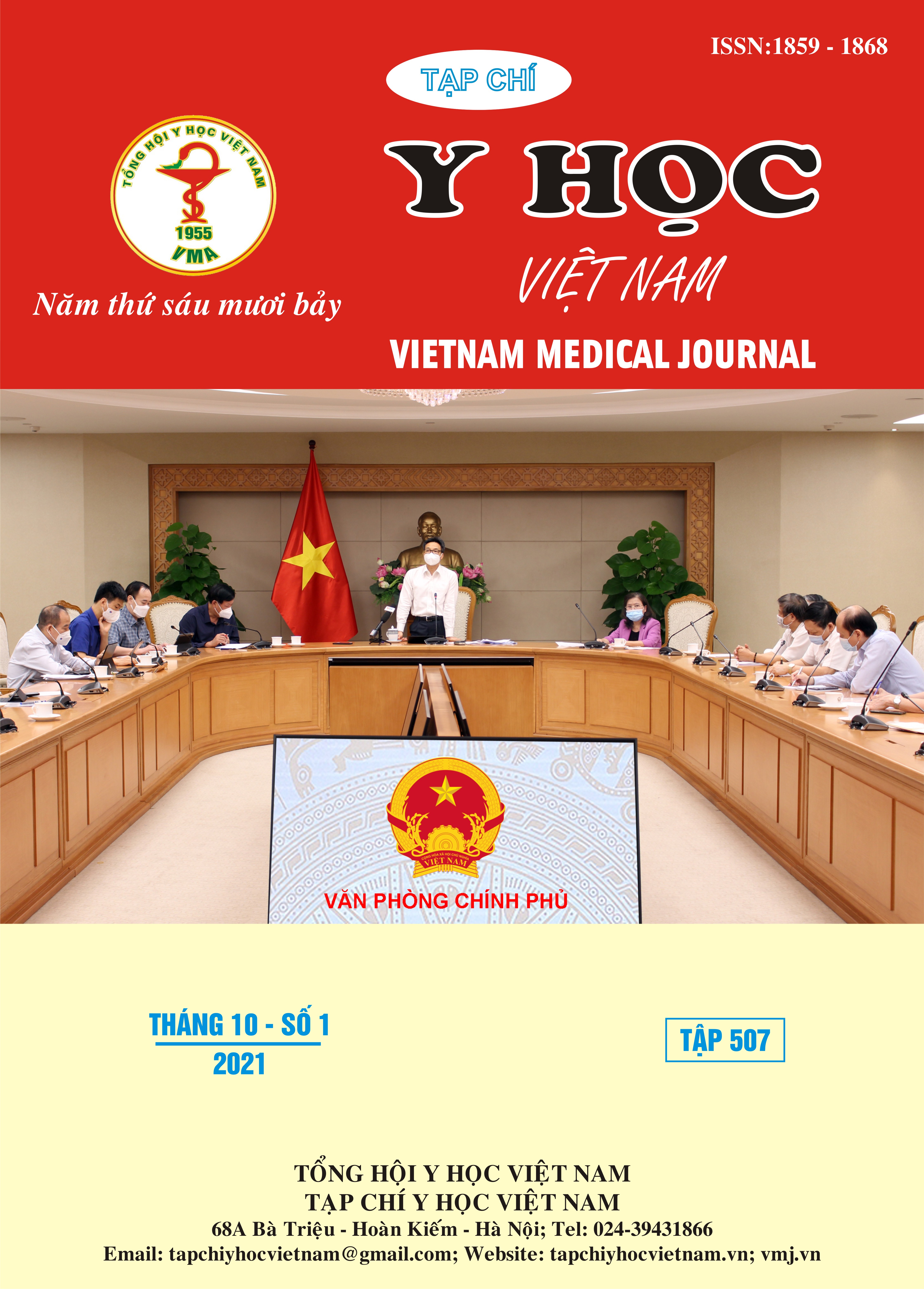CLINICAL AND SUBCLINICAL CHARACTERISTICS OF PATIENTS WITH OVERT SMALL INTESTINAL BLEEDING
Main Article Content
Abstract
Overt small intestinal bleeding is a rare disease and the description of clinical characteristics of patient with this disease is very useful in clinical practice. Objective: This study was conducted with the objective: to describe the clinical and subclinical characteristics of patients with overt small intestinal bleeding. Method: progression description analysis. Results: Among 84 patients, the male/ female ratio was 1.96/1, the mean age of male patients was lower than that of female patients and there was a difference in the causes of bleeding by gender. There were 39.3% of patients with history of GI bleeding of unknown cause, 35.7% of patients with chronic diseases and 7.1% of patients taking anticoagulants and NSAIDs. In patients with black stools, the rate of lesions located in the distal duodenum and jejunum was 70.9%, higher than that of blood stool at 37.9%. Patients with moderate and severe blood loss on clinical manifestations accounted for 38.1% and on hemoglobin test accounted for 82.1%. There were 81.0% of patients requiring red blood cells transfusion. Computed tomography detected small intestinal lesions in 37.5% of patients. Conclusion: most patients with overt small intestinal bleeding had moderate to severe blood loss and required blood transfusion.
Article Details
Keywords
overt gastro-intestinal bleeding, small intestinal bleeding
References
2. Nguyễn Công Long, Bùi Xuân Trường, Nguyễn Thị Vân Hồng et al (2009). Đặc điểm lâm sàng và cận lâm sàng xuất huyết tiêu hoá nguyên nhân từ ruột non. Tạp chí khoa học Tiêu hoá Việt Nam, IV(16), 1069 - 1074.
3. D. L. Jiang, H. Y. Liu, Y. Yuan et al (2012). Analysis of the causes and clinical characteristics of jejunoileal hemorrhage in China: a multicenter 10 year retrospective survey. BMC Gastroenterol, 12, 101.
4. A. Yin, L. Zhao, Y. Ding et al (2020). Emergent Double Balloon Enteroscopy in Overt Suspected Small Bowel Bleeding: Diagnosis and Therapy. Med Sci Monit, 26, e920555.
5. M. C. Ba, S. H. Qing, X. C. Huang et al (2006). Diagnosis and treatment of small intestinal bleeding: retrospective analysis of 76 cases. World J Gastroenterol, 12(45), 7371-4.
6. Đỗ Anh Giang, Kiều Văn Tuấn, Nguyễn Mạnh Trường et al (2014). Hiệu quả chẩn đoán và điều trị chảy máu tiêu hoá ruột non bằng nội soi ruột non bóng đơn Tạp chí khoa học Tiêu hoá Việt Nam, IX(37), 2447 - 2454.
7. B. L. Zhang, C. X. Chen and Y. M. Li (2012). Capsule endoscopy examination identifies different leading causes of obscure gastrointestinal bleeding in patients of different ages. Turk J Gastroenterol, 23(3), 220-5.
8. C. N. Zhu, J. Friedland, B. Yan et al (2018). Presence of Melena in Obscure Gastrointestinal Bleeding Predicts Bleeding in the Proximal Small Intestine. Dig Dis Sci, 63(5), 1280-1285.
9. Z. Wang, J. Q. Chen, J. L. Liu et al (2013). CT enterography in obscure gastrointestinal bleeding: a systematic review and meta-analysis. J Med Imaging Radiat Oncol, 57(3), 263-73.


